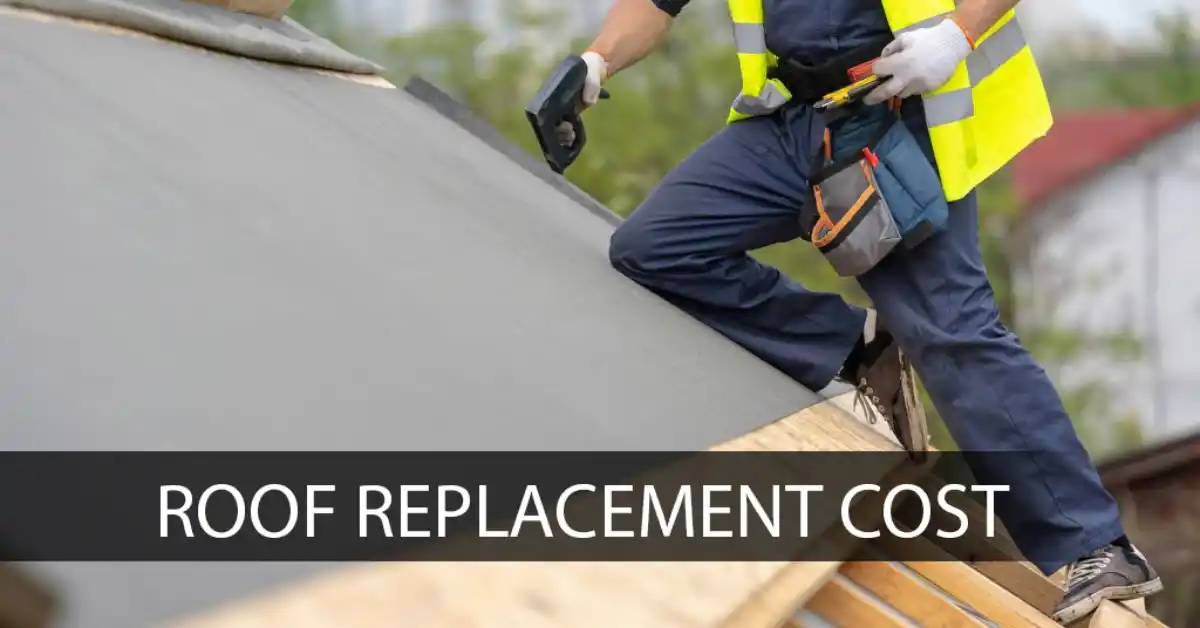What Is Roof Replacement?
Roof replacement is the process of removing an old or damaged roof and installing a new one to restore your home’s safety, efficiency, and curb appeal. Unlike small repairs, a full Roof Replacement ensures long-term protection from weather damage, lowers energy costs, and significantly increases resale value. It’s one of the most impactful home-improvement projects homeowners can invest in during 2025.
Why Roof Replacement Matters in 2025
Roof Replacement in 2025 is more than a routine repair. With rising climate risks, stricter building codes, and inflation in material prices, homeowners are focusing on durability and energy efficiency when upgrading their roofs.
A new roof can raise home value by $12,000–$20,000 on average.
Energy-efficient roofing may cut utility bills by 15–20% annually.
Many insurers offer reduced premiums for homes with recently replaced roofs.
Quick Answer: The average cost to replace a roof in 2025 ranges from $10,000 to $25,000, depending on roof size, material, and location.
Average Roof Replacement Costs in 2025
| Roof Type | Avg. Cost per Sq. Ft. | Total Cost (2,000 sq. ft.) | Lifespan |
|---|---|---|---|
| Asphalt Shingles | $5 – $8 | $10,000 – $16,000 | 20–30 years |
| Metal Roofing | $8 – $14 | $16,000 – $28,000 | 40–70 years |
| Tile Roofing | $10 – $20 | $20,000 – $40,000 | 50+ years |
| Slate Roofing | $15 – $25 | $30,000 – $50,000 | 75+ years |
| Flat Roof (TPO) | $6 – $12 | $12,000 – $24,000 | 15–25 years |
State-by-State Roof Replacement Costs in 2025
California – $18,000–$35,000 (high labor & premium materials).
Texas – $12,000–$25,000 (storm-resistant roofing in demand).
Florida – $15,000–$30,000 (hurricane codes increase expenses).
Midwest States – $10,000–$20,000 (lower material and labor rates).
Northeast – $16,000–$28,000 (older homes may require structural updates).
Factors Affecting Roof Replacement Costs
Material Choice – Asphalt is most affordable; slate and tile are premium.
Roof Size & Pitch – Larger and steeper roofs require more labor.
Labor Rates – Higher in coastal and urban areas.
Tear-Off vs. Overlay – A complete tear-off ensures better durability.
Permits & Codes – Compliance with local regulations may add cost.
Best Roofing Materials in 2025
Asphalt Shingles
Most affordable and widely available.
Lifespan: 20–30 years.
Best for budget-conscious homeowners.
Metal Roofing
Fire-resistant, recyclable, energy-efficient.
Excellent in wildfire-prone and storm-heavy states.
Lifespan: 40–70 years.
Tile Roofing
Heat-resistant and durable.
Ideal for hot climates like California and Florida.
Lifespan: 50+ years.
Slate Roofing
Premium look and unmatched longevity.
Best for historic or luxury homes.
Lifespan: 75+ years.
Flat Roofing (TPO/EPDM)
Common in modern homes and commercial properties.
Affordable but shorter lifespan (15–25 years).
Financing Options
Home Equity Loans – Fixed payments for large projects.
HELOCs – Flexible borrowing for ongoing upgrades.
Contractor Financing – Many companies offer installment plans.
Insurance Coverage – May apply if damage was caused by storms or fire.
Government Programs – Energy-efficient roofing may qualify for tax credits.
Choosing the Best Roofing Contractors in 2025
Check Credentials – Ensure licensing, insurance, and certifications.
Get Multiple Quotes – Compare at least 3 contractors.
Read Reviews – Use platforms like BBB, Angi, and Google Reviews.
Ask for Warranty – Look for 25–50 year warranties on both labor and materials.
Avoid Storm Chasers – Stick to local, established businesses.
Pro Tip: Contractors certified by manufacturers like GAF or CertainTeed often provide extended warranties.
Roof Replacement ROI in 2025
Replacing your roof is one of the top home remodelling projects for return on investment:
ROI: 60–70% on average.
Faster sales: Homes sell 20–30% quicker with a new roof.
Long-term energy savings and reduced insurance premiums.
DIY Roof Replacement: Is It Worth It?
While DIY roof replacement may seem cheaper, it comes with major risks.
Cons: Safety hazards, no warranty, possible code violations.
Pros: Only feasible for very small structures (sheds, detached garages).
Hiring a professional ensures compliance, quality installation, and long-term durability.
Conclusion
Roof replacement in 2025 is a smart investment for homeowners who want better protection, lower bills, and higher resale value. While asphalt shingles remain the most affordable option, materials like metal, tile, and slate deliver unmatched longevity. By choosing the right contractor and financing plan, you’ll maximize both cost savings and long-term ROI.







